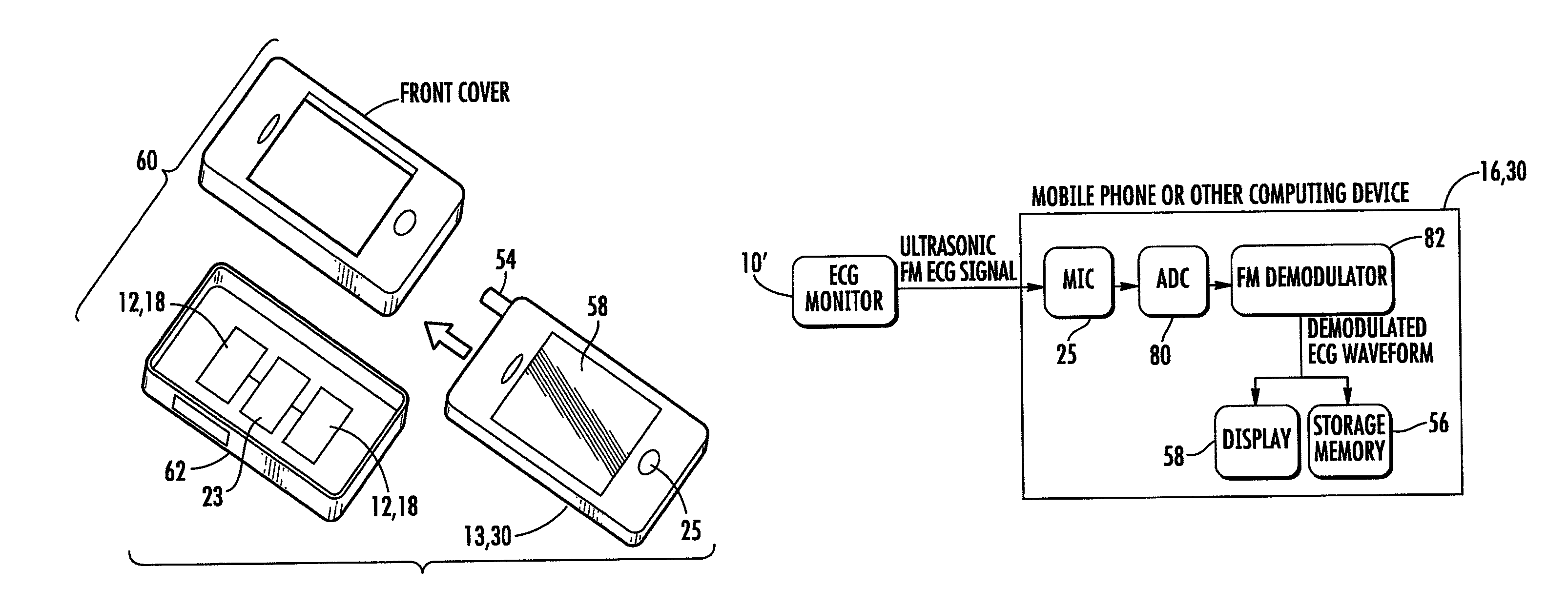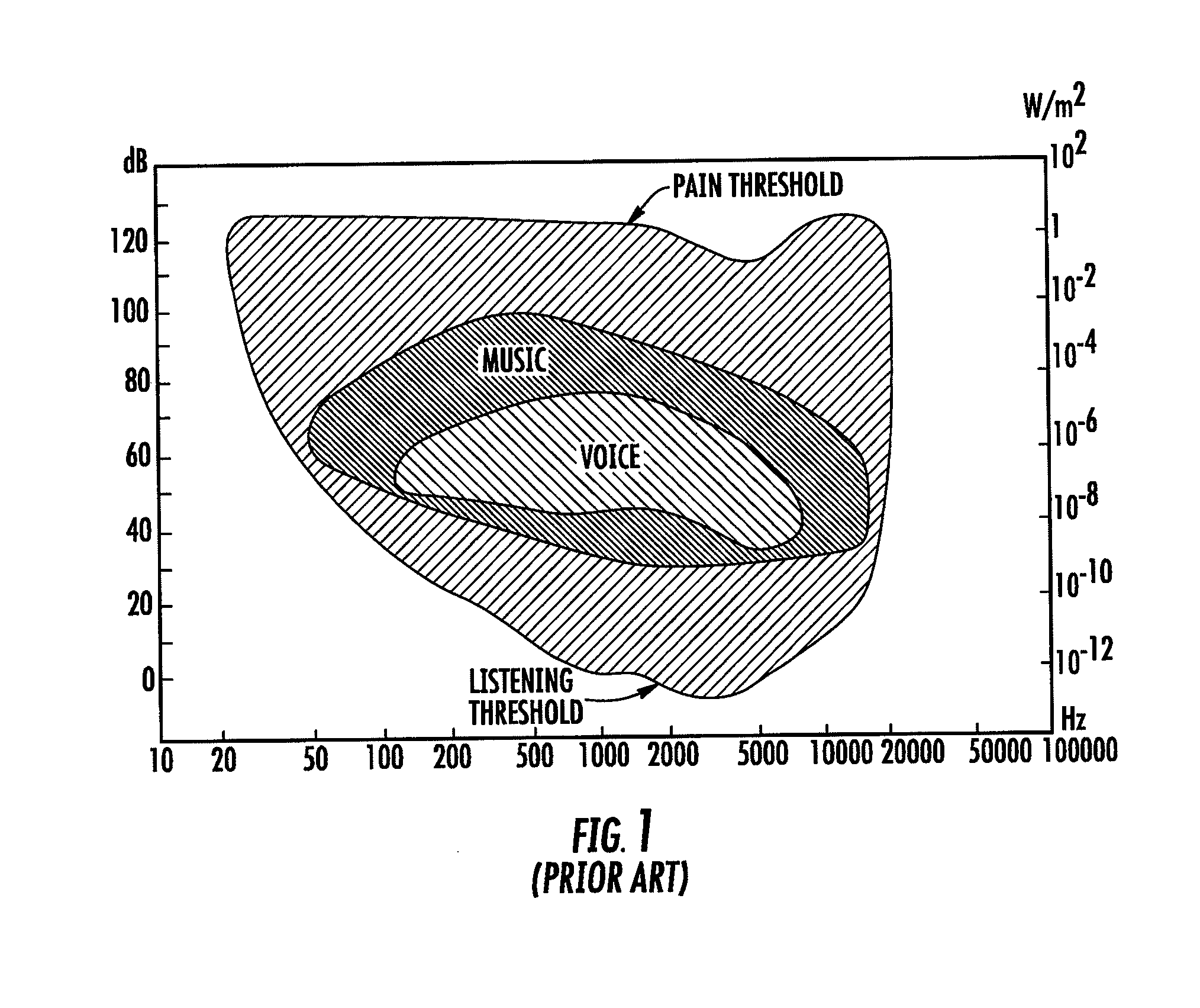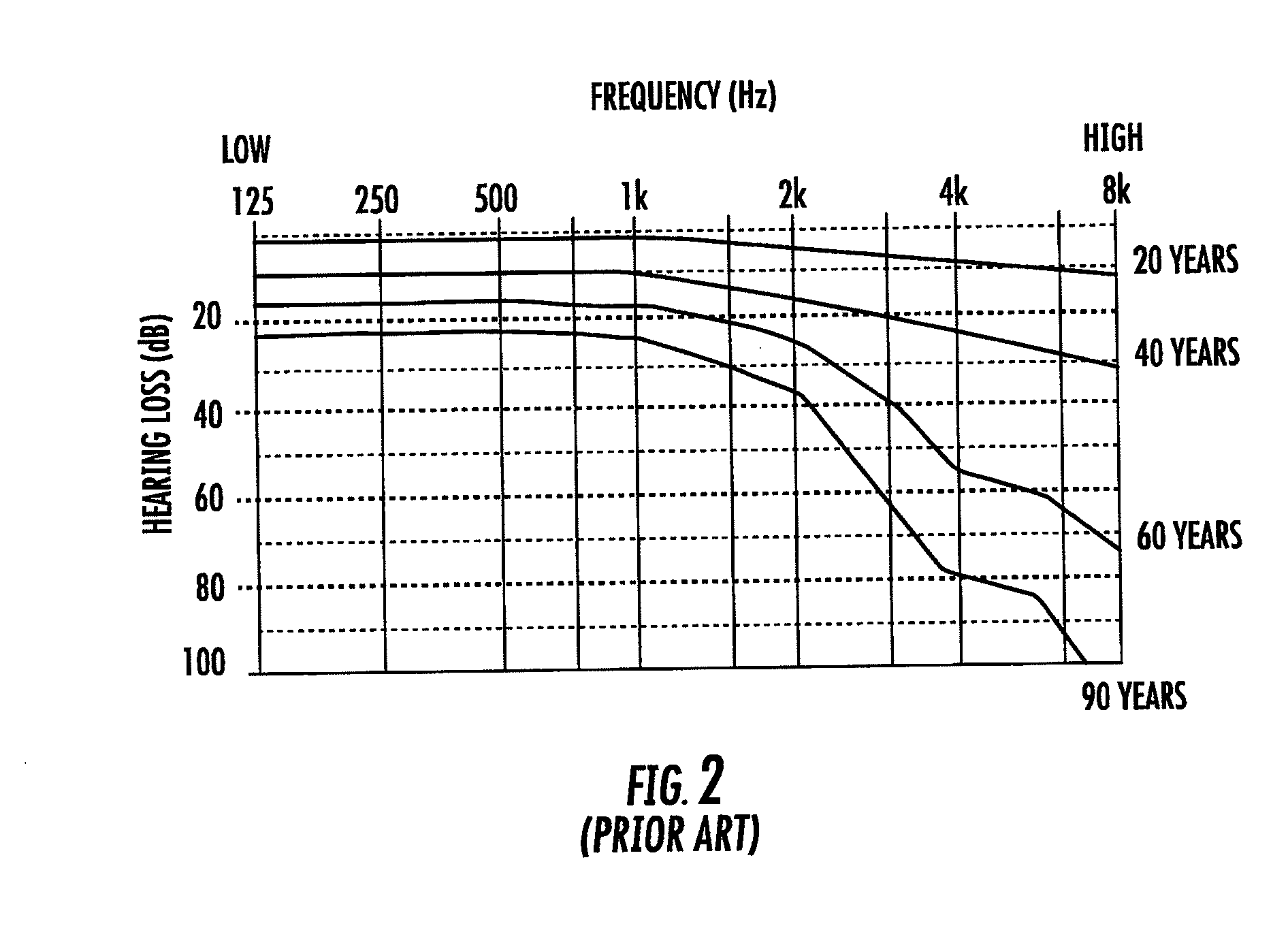Wireless, ultrasonic personal health monitoring system
a personal health monitoring and ultrasonic technology, applied in the field of personal physiology monitoring devices and methods, can solve the problems of no consideration of carrier frequencies above about 3 khz, no consideration of demodulation methods at higher carrier frequencies, and limited audio transmissions
- Summary
- Abstract
- Description
- Claims
- Application Information
AI Technical Summary
Benefits of technology
Problems solved by technology
Method used
Image
Examples
example
[0066]In one working example, illustrated in FIG. 14, a system used an ultrasonic FM ECG signal transmitted from a portable ECG monitor to a microphone 25 in a mobile phone 30 as well as a personal computer 16. This provided a low-cost wireless transmission solution that is compatible with most mobile phones and computers that have a microphone, without requiring any additional hardware to receive the signal.
[0067]It is desirable that the FM signal is above 18 kHz, so that it is inaudible to most people, does not interfere with music or speech, and is also less prone to audio interference. It is also desirable for the FM signal to have a narrow bandwidth to further reduce its susceptibility to audio interference. In this case the ECG monitor used an ultrasonic FM carrier of 19 kHz, modulated with an ECG at 200 Hz / mV and having a range of ±5 mV. This resulted in an ultrasonic FM signal between 18 kHz and 20 kHz.
[0068]First, the audio FM signal was picked up by a microphone 25 and dig...
PUM
 Login to View More
Login to View More Abstract
Description
Claims
Application Information
 Login to View More
Login to View More - R&D
- Intellectual Property
- Life Sciences
- Materials
- Tech Scout
- Unparalleled Data Quality
- Higher Quality Content
- 60% Fewer Hallucinations
Browse by: Latest US Patents, China's latest patents, Technical Efficacy Thesaurus, Application Domain, Technology Topic, Popular Technical Reports.
© 2025 PatSnap. All rights reserved.Legal|Privacy policy|Modern Slavery Act Transparency Statement|Sitemap|About US| Contact US: help@patsnap.com



